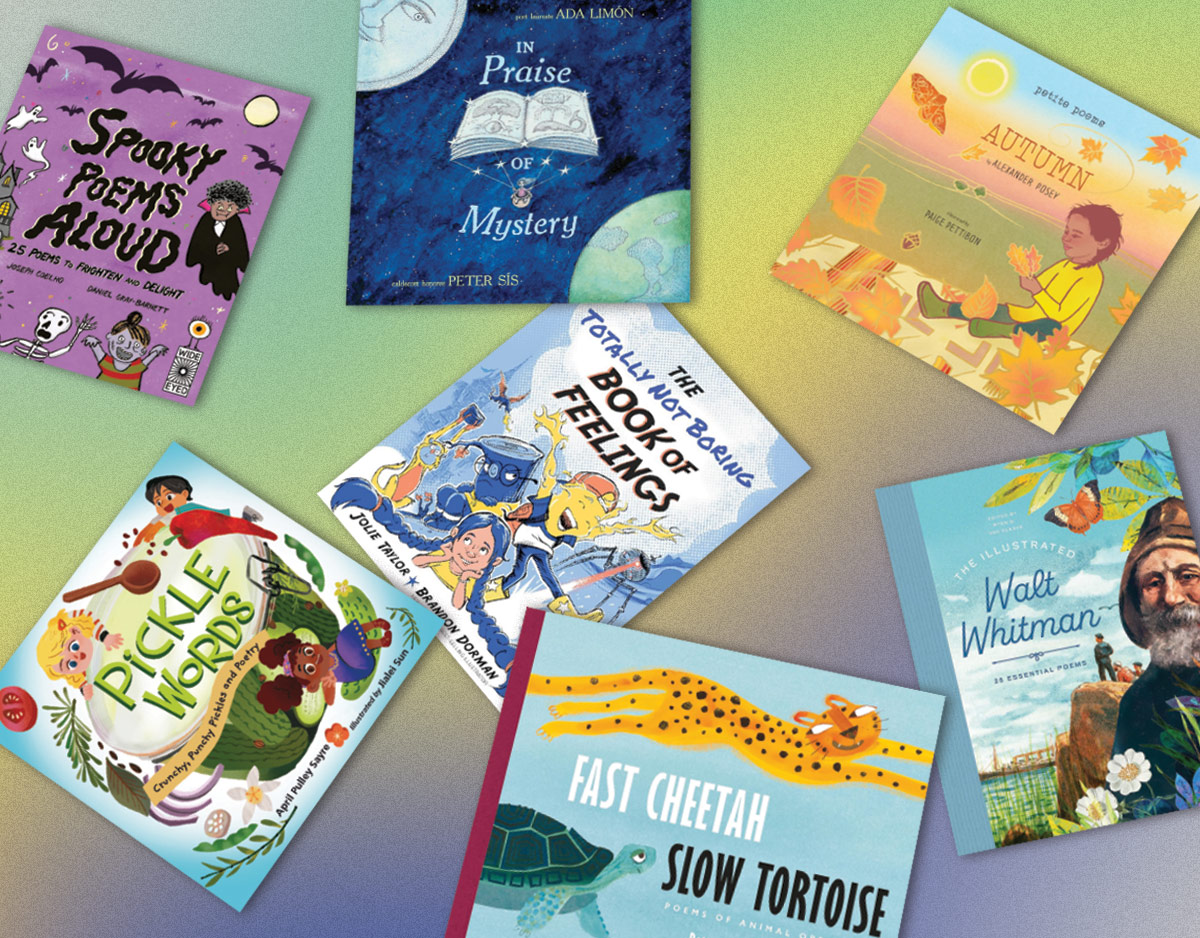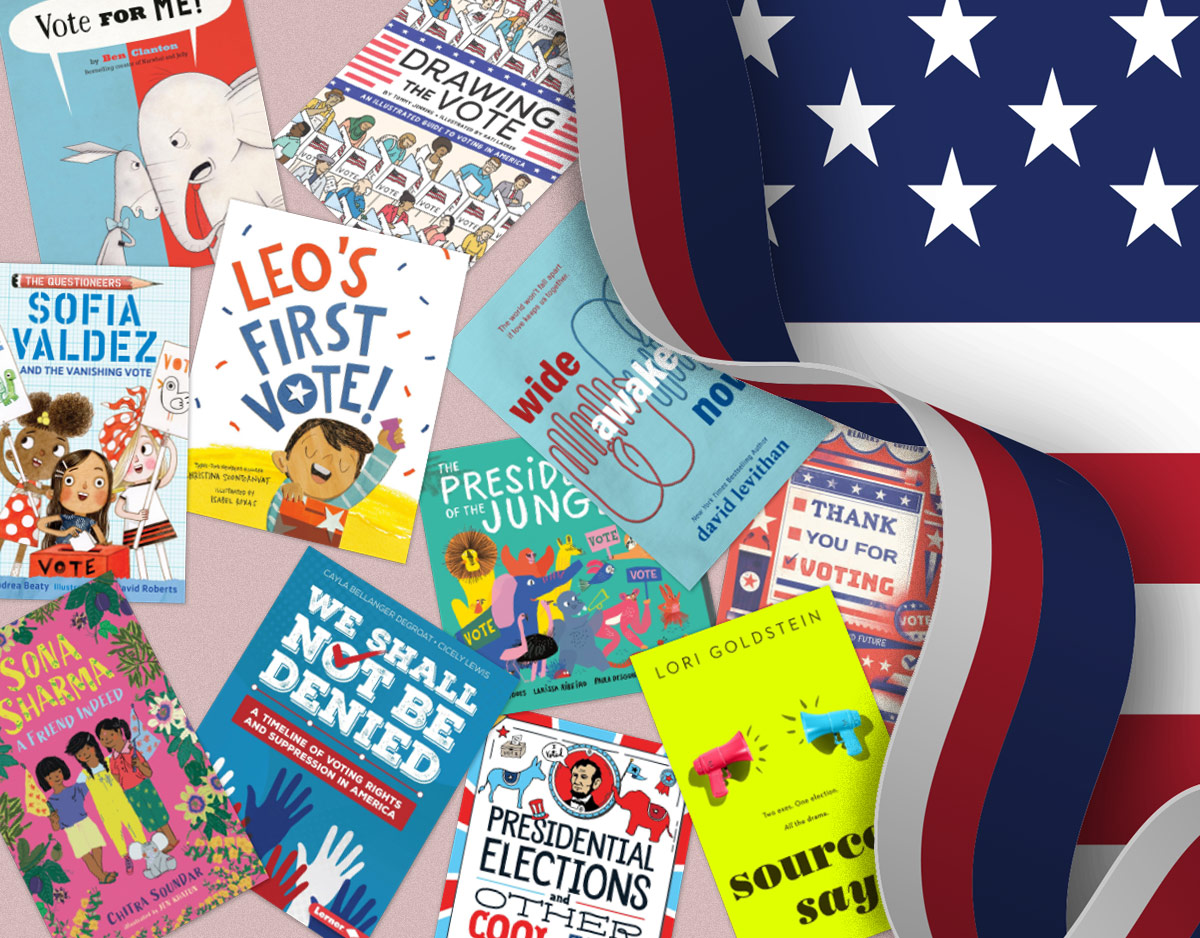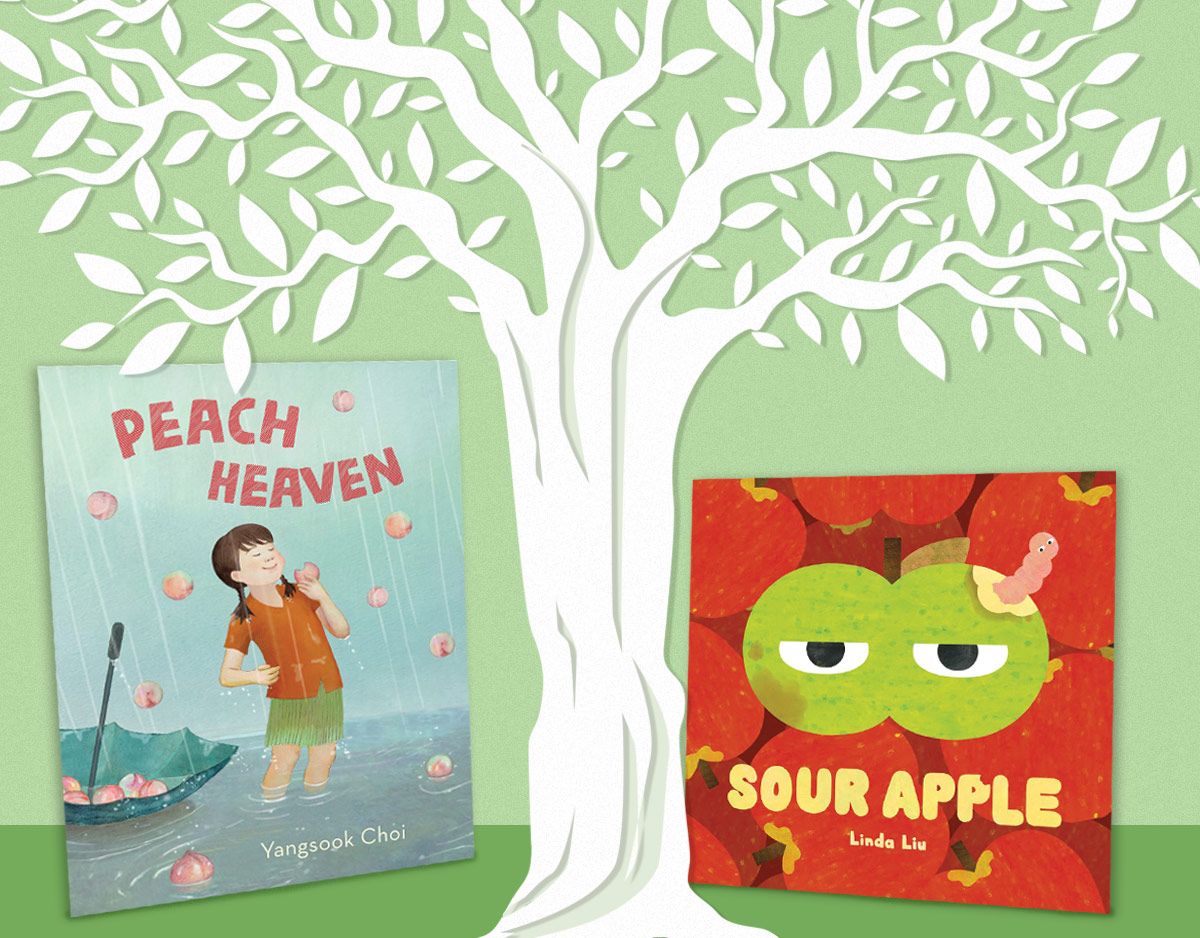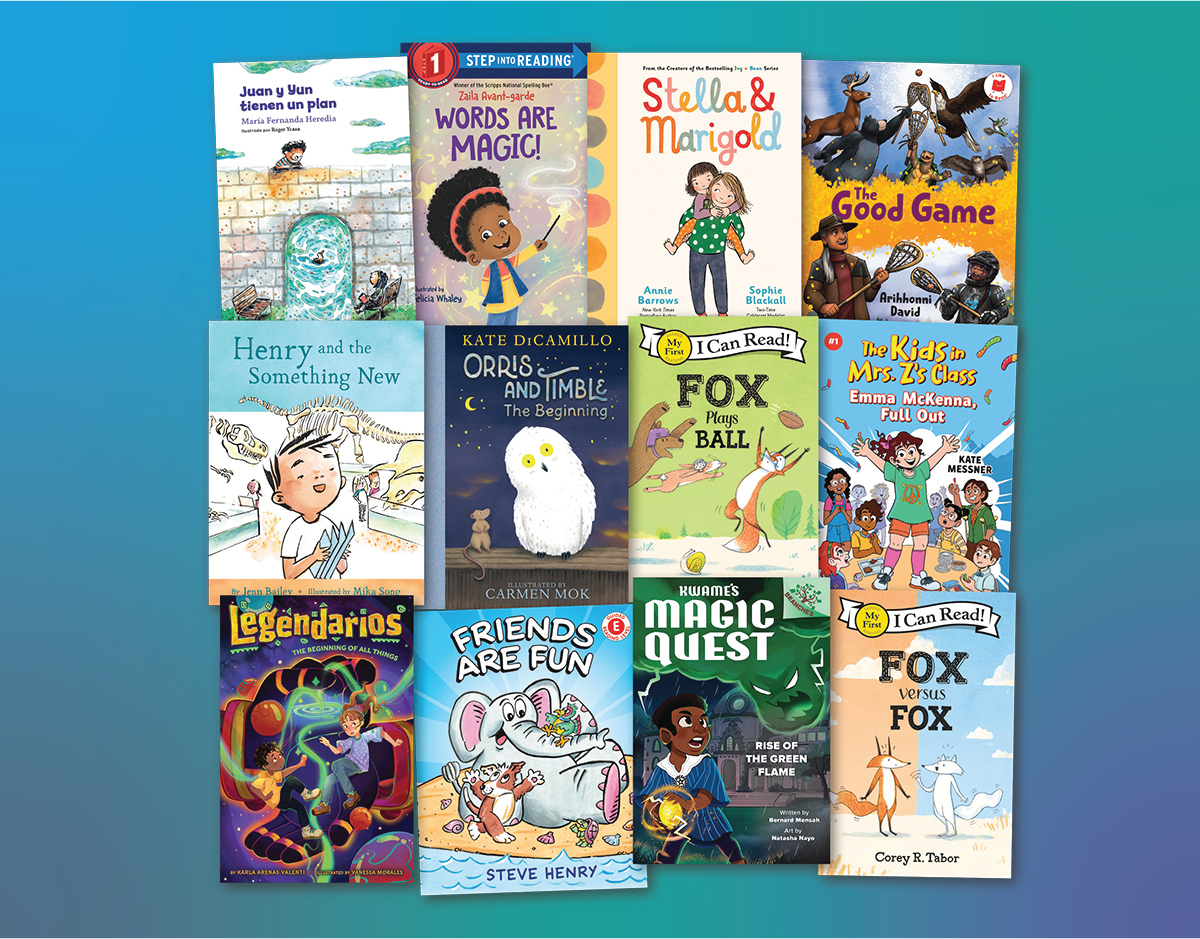Nothing Stopped Sophie and Counting on Katherine
 Nothing Stopped Sophie: The Story of Unshakable Mathematician Sophie Germain
Nothing Stopped Sophie: The Story of Unshakable Mathematician Sophie Germain
Written by Cheryl Bardoe; Illustrated by Barbara McClintock
Published by Little, Brown Young Readers, 2018
ISBN #978-0-316-27820-1
Grades K and up
As a young girl, Sophie Germain could not get enough of numbers: “she cherished how math could make sense of the world.” But growing up in France in the late 1700s and early 1800s meant that she was breaking all kinds of social norms. Girls were not supposed to care about “anything more serious than hair ribbons or what music to play on the pianoforte,” let alone dream of being a mathematician. But, as the title of this remarkable picture book biography explains, nothing stopped Sophie. Studying in secret and under a male pseudonym, Sophie exasperated her parents, surprised respected math scholars, and upset convention about what girls and women could do. Despite being shunned for years by the mathematician community, Sophie persisted in her goals, submitted answers to seemingly impossible math problems, and ultimately won a grand prize from the Royal Academy of Sciences. Bardoe’s engaging account of Sophie’s determination and accomplishments are complemented by McClintock’s colorful, swirling illustrations. An inspirational tale about the power and possibility of individual persistence and social change, Nothing Stopped Sophie is a compelling text to incorporate in the classroom in a variety of ways.
 Counting on Katherine: How Katherine Johnson Saved Apollo 13
Counting on Katherine: How Katherine Johnson Saved Apollo 13
Written by Helaine Becker; Illustrated by Dow Phumiruk
Published by Christy Ottaviano Books, 2018
ISBN #978-1-250-13752-4
Grades K and up
Throughout the mid- to late 20th century, the faces of the American Space Program have overwhelmingly been male. Yet, the historical successes of the program could not have happened without the help of a brilliant Black female mathematician named Katherine Johnson. During the first half of the century, Katherine’s proclivity and skill with math accelerated her education so that surpassed her older brothers and was ready for high school by age 10. But racial segregation meant that getting the appropriate education was challenging, and being a woman meant her job prospects were largely limited to teaching and nursing. When the U. S. government began hiring thousands of people in the 1950s—including Black women—to support its success in the Space Race against the Soviet Union, Katherine found her chance. As a “computer,” she calculated long math equations and built a strong reputation for her accuracy and leadership. Those skills would make her an indispensable member of the team that would launch John Glenn as the first person into space, send the crew of the Apollo 11 to land on the moon, and bring the crew of the damaged Apollo 13 safely back to Earth. With accessible text, Becker highlights Katherine’s steadfast approach to her goals in her personal and professional life. Phumiruk’s bright mixed-media illustrations help accentuate the positive mindset that helped Katherine succeed. An important story that deserves its share of the spotlight when it comes to math and science accomplishments, Counting on Katherine is a must-read for all.
ADVERTISEMENT
ADVERTISEMENT
Teaching Ideas and Invitations
Grades K and up
- More about Sophie and Katherine. These picture book biographies offer an introduction to two remarkable women who made significant contributions to their fields. Invite students to learn more about them. Use the lists in the back of each book and enlist the help of your school or local librarian to find more resources about these women. Other resources are listed below in Further Explorations. What information can students add to Nothing Stopped Sophie and Counting on Katherine to gain a deeper understanding of the social and professional challenges these women faced, as well as the strength of their accomplishments?
- Girls and Math. According to the National Council of Teachers of Mathematics, recent research on gender differences in math shows that the differences in math performance in schools is actually small. However, attitudes, values, and career aspirations continue to show more pronounced differences. With your students, investigate the reasons behind these findings. What experiences might girls have with math to address some of the issues and reasons? Where can they find role models and examples of women and girls who enjoy math or pursue a career involving mathematics? Some of these role models and examples may be found in books; others may in be in your local community. Invite some female scientists and mathematicians to meet with your students to share their stories, dispel myths about girls and math, and help encourage more girls to consider math in different ways.
- Math is Everywhere. Barbara McClintock’s absorbing artwork illustrates how Sophie Germain constantly had math on her mind. Those illustrations also symbolize how math is involved in everything we do in our daily lives. Take students on a community walk around the school or neighborhood to point out and model for them how math affects everything around them: the size of the classrooms, the number of chairs and tables needed in the cafeteria, the timing of stoplight changes, the music they hear from a passing car, etc. Have students spend a day observing and listing the many ways math surrounds them, and perhaps challenge them to come up with math equations or problems to solve that explain some of their observations.
- Growth Mindset Principles: Perseverance and Flexible Thinking. The examples of Sophie Germain and Katherine Johnson display two of the key principles of growth mindset development, such as perseverance and flexible thinking. What do each of those concepts mean? Young students might be new to this concept, and so they may have little experience with perseverance, or they might not know what it means to think flexibly. However, they most likely have faced challenges and setbacks that frustrated them. Ask them to identify times when they have been frustrated or upset because they couldn’t (yet) do something they really wanted to do. List these moments on a chart for the class to see. Then have students interview a variety of people—family members, school faculty and staff, coaches, neighbors, etc.—about a time when they persevered through a challenge or had to think about and approach it differently. If students are able to, have them audio record these stories (if conducting the interviews in school, using school iPads or other technology would work). Listen to these stories in small groups or as a class, identifying common themes, outlooks, and approaches in the stories so they can begin to construct definitions of perseverance and flexible thinking. For an example of how children’s literature can foster these discussions in the classroom, see this article co-authored by Grace.
Grades 3 and up
- Math’s Hidden Women. Read the text of the PBS NOVA program The Proof, particularly the excerpt on Sophie Germain. What additional information does it provide about Sophie Germain and her work on Fermat’s Last Theorem? Encourage students to explore other links on The Proof’s site, especially the Biographies of Women Mathematicians. What similarities and differences do they notice across the women’s stories? What similarities and differences do they notice between the women of the past and the women of today in terms of math?
- Katherine Johnson and Hidden Figures. Katherine Johnson is the main focus of the 2016 Academy Award nominated film Hidden Figures. Watch the film with your students, and have them note the similarities and differences in the way her story is told. What details are added, omitted, or altered to make her story work as a picture book versus a full-length film? What common themes and messages do they have? What has changed in terms of Black women in the STEM fields since then? Share this article and other resources listed below in Further Explorations to build schema and support these discussions. You might also read the book by Margot Lee Shetterly upon which the film was based (either the novel or the picture book), and have a similar conversation across both books and the film.
Critical Literacy
- Women in the Space Program. Despite Katherine Johnson’s professional success, there was widespread gender inequity at work in the U.S. Space Program. Read Almost Astronauts, by Tanya Lee Stone, and compare and contrast it with what you’ve learned about Katherine Johnson. How were the women in depicted in that book not just marginalized, but purposefully snubbed? Have students do further research on women in the Space Program and what it took for women to gain the opportunities and recognition that men did. Who are some other notable women in the Space Program, and how are girls and women regarded in the program today?
- More Hidden Figures: Individual versus Group Achievements. Just as the individual achievements of John Glenn and Neil Armstrong could not have happened without Katherine and her extraordinary colleagues, Katherine Johnson stated, “[W]e always worked as a team. It was never just one person.” In fact, the many of the accomplishments of famous individuals are actually the result of the work of a team of supporting colleagues, not just one person. For example, Olympic athletes have coaches and trainers, prize-winning authors and illustrators work closely with editors and assistants, film directors and producers have a large crew to create their movies, and accomplished civic leaders and politicians rely on the work of their staff to achieve goals. Help students identify the people who work hard behind the scenes and get far less recognition than the single person or name that fronts the work. Have them write a narrative or informational piece to give voice to them in the spirit of bringing more hidden figures into the limelight.
- Math Awards and Awards for Mathematicians. Sophie Germain was the first woman to win a grand prize from the Royal Academy of Sciences in France. Katherine Johnson received the U.S. Presidential Medal of Freedom for her contributions to the Space Program. What other major awards might a mathematician receive? After researching and giving presentations on these awards, engage your students in critical literacy and critical thinking skills by investigating how many of those awards have been given to women.
Further Explorations
Online Resources
Cheryl Bardoe’s website
Helaine Becker’s website
Barbara McClintock’s website
http://www.barbaramcclintockbooks.com/
Dow Phumiruk’s website
National Council of Teachers of Mathematics
NASA – From Hidden Figures to Modern Figures
https://www.nasa.gov/modernfigures
NOVA – Math’s Hidden Figure
http://www.pbs.org/wgbh/nova/physics/sophie-germain.html
15 Black Women Who are Paving the Way in STEM and Breaking Barriers
https://www.essence.com/holidays/black-history-month/black-women-stem-careers/
Wisdom from Black Women in STEM
https://www.seas.harvard.edu/news/2018/03/wisdom-from-black-women-in-stem
Famous African American Women in STEM
https://www.napequity.org/resources/famous-african-american-women-stem/
Black Women in Science and Engineering
The Mathematics Association of America
http://www.maa.org/
American Mathematical Society
http://www.ams.org/
Books
Robbins, D. (2017). Margaret and the moon. Ill. by L. Knisley. Knopf Books for Young Readers.
Shetterly, M. L. (2016). Hidden figures: The American dream and the untold story of the Black women who helped win the Space Race. William Morrow and Company.
Shetterly, M. L. (2018). Hidden figures: The true story of four Black women and the Space Race. Ill. by L. Freeman. HarperCollins.
Stanley, D. (2017). Ada Lovelace, poet of science: The first computer programmer. Ill. by J. Harland. Simon and Schuster.
Stone, T. L. (2009). Almost astronauts: 13 women who dared to dream. Candlewick Press.
Filed under: Biography & Memoirs, Nonfiction, Nonfiction Picture Books
About Grace Enriquez
Grace is an associate professor of language and literacy at Lesley University. A former English Language Arts teacher, reading specialist, and literacy consultant, she teaches and writes about children’s literature, critical literacies, and literacies and embodiment. Grace is co-author of The Reading Turn-Around and co-editor of Literacies, Learning, and the Body.
ADVERTISEMENT
ADVERTISEMENT
SLJ Blog Network
One Star Review, Guess Who? (#211)
Cover Reveal and Q&A: Dusti Bowling’s Latest – The Beat I Drum (Apr 2025)
Girlmode | Review
The Seven Bills That Will Safeguard the Future of School Librarianship
Read Rec Rachel: New YA Releases for November and December 2024
Gayle Forman Visits The Yarn!
ADVERTISEMENT







